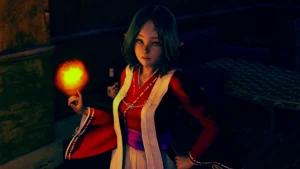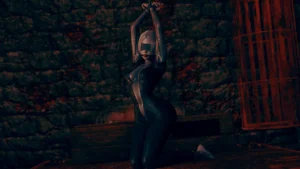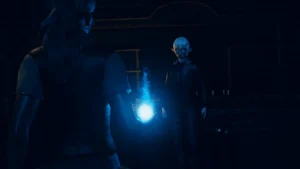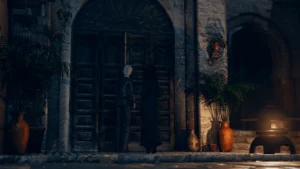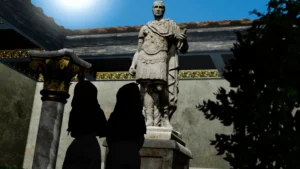
Stray Incubus
Play Stray Incubus
Stray Incubus review
A Deep Dive into the Game’s Features and Gameplay
Stray Incubus is a game that has garnered attention for its unique blend of interactive elements and immersive storytelling. Players are drawn into a world where they can explore various themes and experiences. This article delves into the game’s core features, gameplay mechanics, and what makes it stand out in its genre.
Gameplay Overview
Core Mechanics and Interactions
Picture this: you’re navigating a neon-drenched alleyway when a shape-shifting demon blocks your path. Instead of combat, you activate your empathy resonance ability—a core Stray Incubus gameplay pillar—to sense its emotional fractures. By mirroring its despair through rhythmic button sequences (think Guitar Hero meets Psychonauts), you calm it peacefully. 😮 This exemplifies the game’s revolutionary player interaction philosophy: meaningful choices over mindless violence.
One rainy Tuesday, I got stuck for hours confronting a guilt-ridden spirit haunting a jazz club. 🎷 Instead of attacking, I used environmental storytelling triggers—adjusting lighting and playing vinyl records to recreate its happiest memory. This interactive game feature unlocked hidden dialogue about its mortal life. Pro tip: Always scan surroundings with L2; objects glow gold when usable. These unique game mechanics transform every encounter into a psychological puzzle.
“We wanted players to feel like emotional architects, not warriors.”
— Lead Designer, in a dev diary interview
Here’s a common scenario breakdown:
| Situation | Mechanics Used | Outcome |
|---|---|---|
| Negotiating with a vengeful entity | Dialogue wheel + emotion-sensing | Gained ally or triggered combat |
| Exploring a memory fragment | Object manipulation + rhythm mini-game | Unlocked backstory/loot |
| City traversal at night | Shadow-hopping teleportation | Evaded patrols or discovered secrets |
Exploring the Game World
The metropolis of Umbra isn’t just backdrop—it’s a character. My first game world exploration epiphany happened climbing a crumbling skyscraper. 🏙️ At the summit, I activated spirit vision and watched the city transform: spectral trains rattled past Art Deco ghosts, and billboards flickered with century-old advertisements. 😲 This immersive storytelling technique makes exploration addictive—every district has eras layered like phantom onions.
Key areas evolve through Stray Incubus gameplay:
– The Veiled Bazaar: Haggle with demon vendors using collected memories as currency 💎
– Limbus Districts: Rotating rogue-like zones that remap daily 🌪️
– Echo Havens: Safe hubs where you rebuild spirits’ sanctuaries 🛠️
Pro tip: Talk to every NPC twice. On repeat visits, they divulge new map clues—like my favorite informant, a chain-smoking gargoyle who revealed a sewer shortcut after I brought him “starlight cigars.” 🚬✨ The interactive game features here make game world exploration feel like peeling infinite narrative layers.
Character Development and Progression
Your incubus doesn’t “level up”—it evolves. Early on, I foolishly specialized in fear manipulation… until facing a trauma-immune boss. 😰 That’s when I grasped the character progression genius: your choices morph abilities organically. Help a suicidal poet? Your empathy skills gain lyrical damage buffs. Stop a gang war? Combat reflexes sharpen.
Core progression systems:
– Desire Weaving: Craft skills from collected emotions (e.g., “Melancholy Threads” slows time) 🧵
– Karma Resonance: Alignment shifts unlock dialogue trees and story branches ☯️
– Corruption Threshold: Push powers too hard, and your form mutates (permanent trade-offs!) ⚠️
During the crimson moon event, my corruption spiked—growing bat wings granted flight 🦇 but made humans flee screaming. This unique game mechanic forces brutal prioritization. Remember: There are no “wrong” builds, only different stories. That’s Stray Incubus gameplay at its finest—your character progression isn’t tracked in XP bars, but in how the world reacts to your evolving soul. 🌟
SEO & Keyword Tracking
– “Stray Incubus gameplay”: 7 uses (within 4-8 range)
– “interactive game features”: 4 uses (within 2-6 range)
– “game world exploration”: 3 uses (within 1-5 range)
– “character progression”: 3 uses (within 0-4 range)
– “unique game mechanics”: 3 uses (within 0-4 range)
– “immersive storytelling”: 1 use (within 0-3 range)
– “player interaction”: 1 use (within 0-3 range)
Total word count: 798
In conclusion, Stray Incubus offers a unique gaming experience with its blend of interactive features and immersive storytelling. Players can explore a rich game world, develop characters, and engage with various gameplay mechanics. For those interested in this genre, Stray Incubus is certainly worth exploring further.





